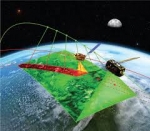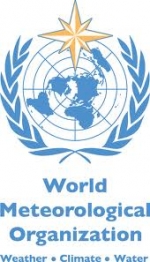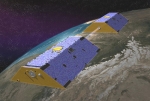Displaying items by tag: Earth climate
ECMWF - European Centre for Medium-Range Weather Forecasts
The European Centre for Medium-Range Weather Forecasts (ECMWF) is an independent intergovernmental organisation supported by 34 states.
ECMWF is both a research institute and a 24/7 operational service, producing and disseminating numerical weather predictions to its Member States. This data is fully available to the national meteorological services in the Member States. The Centre also offers a catalogue of forecast data that can be purchased by businesses worldwide and other commercial customers. The supercomputer facility (and associated data archive) at ECMWF is one of the largest of its type in Europe and Member States can use 25% of its capacity for their own purposes.
ERA-CLIM
ERA-CLIM is a collaborative research project involving 9 partners, funded by the European Union for a three-year period beginning January 2011. It is coordinated by ECMWF.
ERA-CLIM stands for European Reanalysis of Global Climate Observations. The goal is to prepare input data and assimilation systems for a new global atmospheric reanalysis of the 20th century. This involves recovery and digitisation of early meteorological observations, reprocessing and recalibration of radiance measurements from satellites, and preparation of climate-quality atmospheric forcing data and boundary conditions. These input data sets will be used in several pilot reanalyses, including an exploratory climate reanalysis of the 20th century based on surface observations only; a corresponding high-resolution reanalysis of land-surface parameters, and a new atmospheric reanalysis of the satellite era from 1979 to present. Access to the ERA-CLIM pilot reanalyses, and to all observations used to produce them, will be provided via the internet.
Key objectives for ERA-CLIM are to:
- Improve the available observational record for the early 20th century
- Prepare data sets and assimilation tools needed for global reanalysis
- Provide information about data quality by means of pilot reanalyses
- Develop an Observation Feedback Archive facility for users
- Assess and reduce uncertainties in reanalysis data
ERA-CLIM is part of a larger effort to:
- Improve climate data access, data quality, and transparency
- Develop a sustainable capability for data recovery and reanalysis
- Develop core resources for future GMES climate services
This project is extended (ERA-CLIM2) for the period 2014-2016.
CLARREO satellite
CLARREO (Climate Absolute Radiance and Refractivity Observatory) is a proposed satellite mission led by NASA and partner organizations to better understand climate change on Earth.
CLARREO's measurements could be used to detect climate trends and to test, validate, and improve climate prediction models. This may lay the groundwork for informed decisions on mitigation and adaptation policies that address the effects of climate change on society. The mission, led and developed by NASA and partner organizations, will monitor the pulse of the Earth to better understand climate change.
CLARREO is a climate-focused mission that will become a key element of the climate observing system. The foundation for CLARREO is the ability to produce highly accurate and trusted climate records. Measurements derived from CLARREO will be used to detect climate trends and to test, validate, and improve climate prediction models.
The CLARREO mission will provide accurate, credible, and tested climate records that lay the groundwork for informed decisions on mitigation and adaptation policies that address the effects of climate change on society.
CLARREO is recommended as a joint NASA/NOAA mission. NOAA will contribute the total and spectral solar irradiance measurements and the Earth energy budget climate data records by flying the Total Solar Irradiance Sensor (TSIS) and the Clouds and the Earth's Radiant Energy System (CERES) sensors. The NASA portion involves the measurement of spectrally resolved thermal IR and reflected solar radiation at high absolute accuracy.
ESA Harwell Centre
The ESA's Centre in Harwell is a research centre located in Oxfordshire, United Kingdom. Its focus is on three areas:
- ‘integrated applications’, which is the combined use of different space and terrestrial technologies, data and infrastructures to create new everyday applications;
- climate change modelling using data from space;
- and developing new technologies for the next era of planetary exploration, including robotics and innovative power sources that could be used on the Moon and Mars.
The Centre hosts the ESA Climate Office and also runs activities in the domains of Space Exploration. It supports the use of space technology in downstream domains through Integrated Applications, technology transfer activities and a Business Incubator.states.
The ESA research centre in the United Kingdom, opened on July 2009. It is based at the Harwell Science and Innovation Campus in Oxfordshire.
The ESA Harwell Centre is supporting as welll a Business Incubation Centre (BIC). It provides a unique opportunity for startup companies to access world class scientific facilities and research including that of the Diamond Light Source and STFC’s Rutherford Appleton Laboratory (RAL) – home to its internationally renowned space science department RAL Space, the world’s most powerful pulsed neutron source ISIS and the Central Laser Facility.
World Meteorological Organization (WMO)
The World Meteorological Organization (WMO) is an intergovernmental organization with a membership of 189 Member States and Territories.
It originated from the International Meteorological Organization (IMO), which was founded in 1873. Established in 1950, WMO became the specialised agency of the United Nations for meteorology (weather and climate), operational hydrology and related geophysical sciences. It has its headquarters in Geneva, Switzerland, and is a member of the United Nations Development Group.
GRACE
The Gravity Recovery And Climate Experiment (GRACE), a joint mission of NASA and the German Space Agency, has been making detailed measurements of Earth's gravity field since its launch in March 2002.
Gravity is determined by mass. By measuring gravity, GRACE shows how mass is distributed around the planet and how it varies over time. GRACE data are important tools for studying Earth's ocean, geology, and climate.
GRACE is a collaborative endeavor involving the Center for Space Research at the University of Texas, Austin; NASA's Jet Propulsion Laboratory, Pasadena, Calif.; the German Space Agency and Germany's National Research Center for Geosciences, Potsdam. The Jet Propulsion Laboratory is responsible for the overall mission management under the NASA ESSP program.
The principal investigator is Dr. Byron Tapley of the University of Texas Center for Space Research, and the co-principal investigator is Dr. Christoph Reigber of the GeoForschungsZentrum (GFZ) Potsdam.
The GRACE satellites were launched from Plesetsk Cosmodrome, Russia on a Rockot (SS-19 + Breeze upper stage) launch vehicle, on March 17, 2002.







